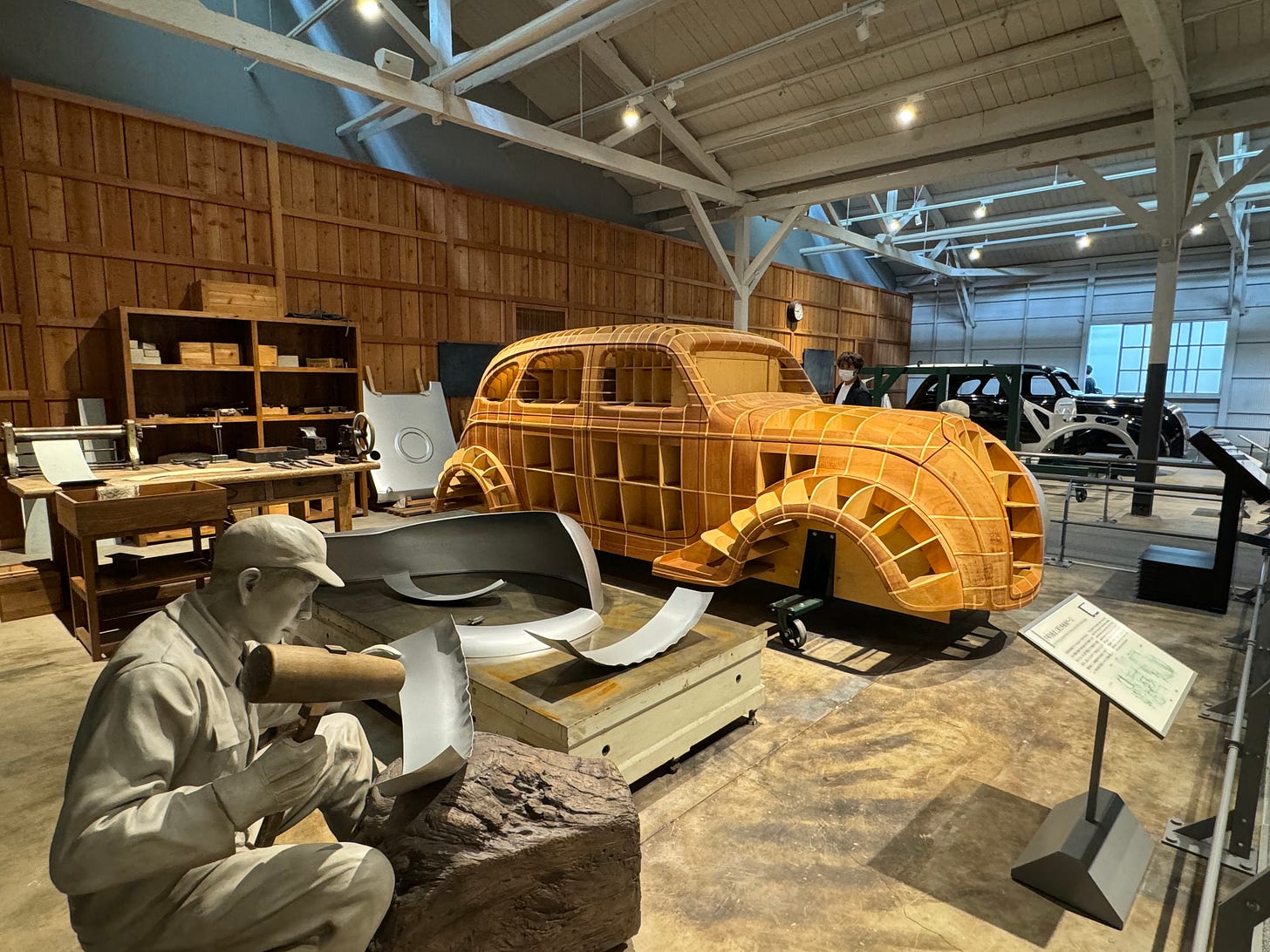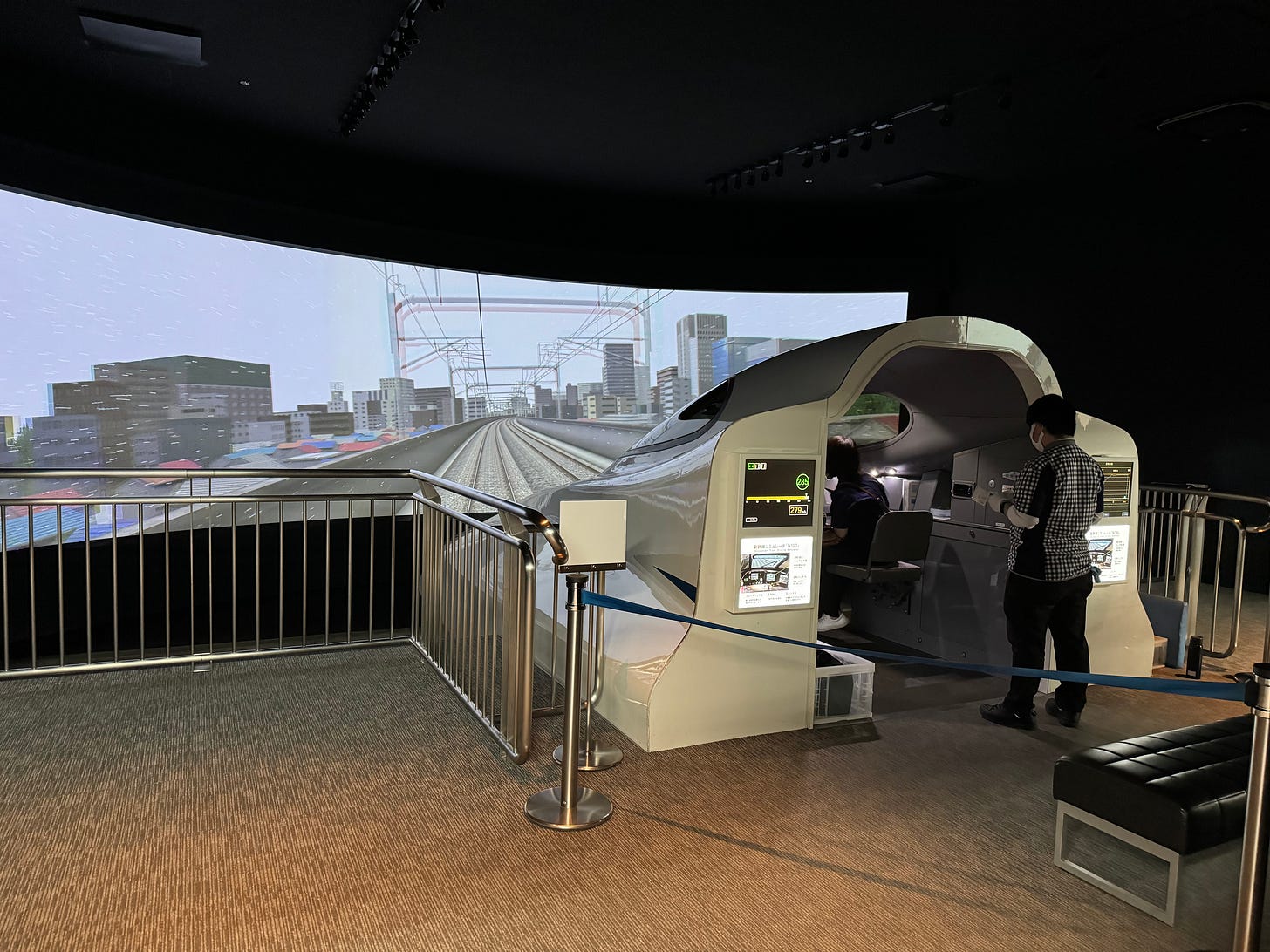An overnighter to Nagoya
What happens when you let Duolingo (and train museums) influence your travel plans
We were able to slip in one final quick trip in early June before leaving Tokyo. We’d actually thought this might be one of two or three short trips to pick up some smaller destinations, but circumstances conspired to make that not work out. Nonetheless, our last trip was a lovely one.
We did a quick overnight run down to Nagoya, spending a day exploring the city. On the second day, N continued on to Kyoto to catch a workshop we didn’t manage to attend during our last trip to Kyoto while T, A, and I stayed in Nagoya for a second day and then we all met on the Shinkansen on the way back to Tokyo.
Our first day started with a visit to Atsuta-Jingu, a very large and beautiful shrine just south of the city center. It was beautiful, and very natural, and thus brought a lovely sense of peace and calm. There were a large number of new parents bringing their babies in for a miyamairi blessing, many in lovely kimono, along with a couple getting married.
Lunch was kishimen, a local Nagoya specialty, which was a wide, flat noodle similar in shape to fettuccine but served in a very similar way to udon. We honestly hadn’t really appreciated how much of a Nagoya thing this was as we ate it, but once we realized, we found ourselves spotting it everywhere we went in Nagoya.
After lunch, we visited the Toyota Commemorative Museum of Industry and Technology. While quite a mouthful, this museum dove deeply into the technical innovations and progress of Toyota as a company throughout the last 150 years and was a really fascinating place to spend some time as a result.
The first half of the museum dealt with Toyoda (as named at the time)‘s history as a textiles manufacturer. With the combined forces of the Meiji Restoration and the Industrial Revolution pushing ever more innovative machinery for the spinning, weaving, and other processes, the improvements in automation, speed, and quality were amazing to see. Furthermore, the museum floor, which was HUGE, was covered in mostly functional and actively demonstrated equipment. This was no static view of dusty machinery, but rather a live working textile manufacturing floor.
Some of the most fascinating equipment were the looms which showed the initial flying shuttlecock automation, sending the shuttle flying back and forth on its own. This was the next natural progression from the equipment we used in our weaving workshop in Kyoto, so to be able to relate directly to the automation provided by this innovation, and then to be able to easily relate to the next few generations of improvement after that, made it really come to life.
With the movement from one generation of Toyodas to another came the move from textiles to automotive, along, shortly after, with the rebranding of the company from Toyoda to Toyota. The second half of the museum thus covered the history of the company and the innovations of its technology, throughout its history as a car manufacturer. This started with a live metal press workshop, where they showed running a piece of metal through coarse, then fine, stamping processes.
They included reconstructions of workshops from Toyota’s early days, as they developed their first passenger vehicles.
This breakdown of an early Corolla model was amusing to see in the context of N’s parents’ family Corolla.
Finally, the journey carried through to robotic vehicle assembly demonstrations, and information about hybrid and electric vehicles.
All in all, it was really interesting to see, especially with the two-fold view of the textile and automotive histories of the business.
For dinner, we let ourselves be whisked away by our Duolingo lessons. Both N and I had recently gone through the Duolingo unit which leaned heavily into talking about “going to Nagoya to eat misokatsu”. There appears to be a limit to the number of times you can be forced to utter those words before you give in and choose to go and actually follow through on the suggestion.
Outside of Duolingo, neither of us had heard of misokatsu before. It turns out to be a Nagoya variant on tonkatsu, where instead of the normal tonkatsu sauce, the cutlet is drenched with a heavy covering of a more liquidy miso-based sauce. It’s nice, and while it won’t replace tonkatsu in my mind, it is a nice occasional alternative. More to the point, the most famous local brand, Yabaton, features some inspired fat-pig-in-sumo-Yokozuna-belt imagery. Really excellent branding.
As I mentioned at the top, the second day, for me and the boys, was spent at the SC Maglev and Railway Park. This plays the role of being JR Central’s main train museum, and with JR Central leading the maglev project to connect Tokyo and Osaka by a magnetic levitation train, it profiled the maglev development as part of its displays along with more conventional trains. Those maglev trains are planned to run at a top operating speed of 505 kph, compared to 320 kph on the current fastest shinkansen and 220 kph on the original Series 0 shinkansen. [Note: If it’s views of the maglev test train in motion you’re after, those can be found at the Yamanashi Prefectural Maglev Exhibition Center.]
We covered this in part in A’s previous post about the museum. Suffice it to say we had a blast. Both the conductor simulation and the train driving simulators went over very well with everyone (the Shinkansen simulator was particularly sizable and realistic). And the sizeable fleet of classic trains was impressive indeed. All in all, a lot of fun to visit.
All in all, a lovely two days. Thanks Nagoya!


















